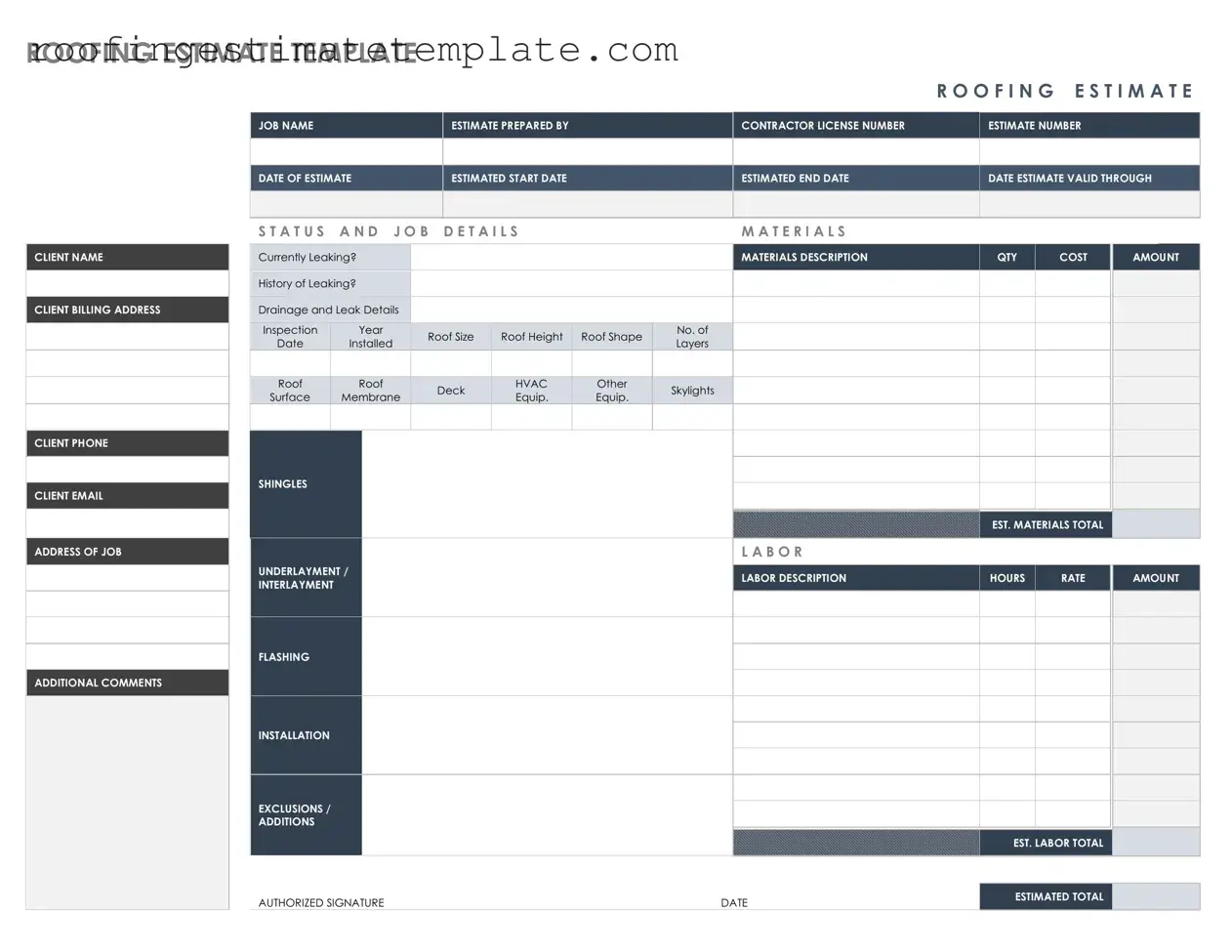The Roofing Proposal form shares similarities with the Home Improvement Contract. Both documents outline the scope of work, materials to be used, and the total cost of the project. A Home Improvement Contract typically includes specific details about the timeline for completion and payment schedules, just as a Roofing Proposal does. Both documents serve to protect the homeowner by clearly defining expectations and responsibilities for the contractor, ensuring that both parties are on the same page before work begins.
Another document that resembles the Roofing Estimate form is the Construction Estimate. Like the Roofing Estimate, a Construction Estimate provides a detailed breakdown of costs associated with a project. It includes labor, materials, and any additional expenses that may arise. Both documents aim to give clients a clear understanding of financial commitments, allowing for better budgeting and planning for the construction or renovation project.
The Bid Proposal form is also akin to the Roofing Estimate. A Bid Proposal is submitted by contractors in response to a request for bids, detailing how much they would charge for a specific job. Similar to a Roofing Estimate, it includes pricing, timelines, and the scope of work. This document helps homeowners compare offers from different contractors, ensuring they make informed decisions based on detailed information.
The Service Agreement is another document that has parallels with the Roofing Estimate. While a Roofing Estimate focuses on a specific project, a Service Agreement outlines the ongoing relationship between a homeowner and a contractor. Both documents detail services to be provided, payment terms, and responsibilities. They establish a foundation for trust and clarity, ensuring that both parties understand their obligations.
The Work Order form also shares characteristics with the Roofing Estimate. A Work Order is used to authorize a contractor to begin work on a specific project. It typically includes a description of the work, costs, and timelines, much like a Roofing Estimate. Both documents facilitate communication between the homeowner and the contractor, ensuring that everyone is aligned on the project’s expectations.
The Project Scope document is similar to the Roofing Estimate in that it outlines the specific tasks and objectives of a project. Both documents define what will be done and what is included in the price. The Project Scope often provides additional context about the project’s goals, while the Roofing Estimate focuses more on the financial aspects, but both are essential for successful project execution.
The Invoice is another document that bears resemblance to the Roofing Estimate. While an Invoice is generated after work is completed, it often reflects the estimates provided beforehand. Both documents detail costs and services, ensuring transparency in financial transactions. Homeowners can compare the Invoice against the original Roofing Estimate to verify that charges align with initial expectations.
The Change Order form is closely related to the Roofing Estimate as well. A Change Order is used when modifications to the original project scope are necessary. It documents any changes in costs or timelines, similar to how a Roofing Estimate outlines initial expectations. Both documents are crucial for maintaining clarity and agreement throughout the course of a project.
The Warranty document also bears similarities to the Roofing Estimate. While the Roofing Estimate provides upfront costs and expectations, the Warranty outlines the terms of service and guarantees for the work performed. Both documents are important for homeowners, as they establish what is covered and what recourse exists should issues arise after project completion.
Finally, the Permit Application can be seen as related to the Roofing Estimate. Although it serves a different purpose, both documents are essential for compliance and project initiation. A Permit Application ensures that the project meets local building codes and regulations, while the Roofing Estimate provides a clear financial outline for the work to be done. Both are integral to the successful execution of a roofing project.

